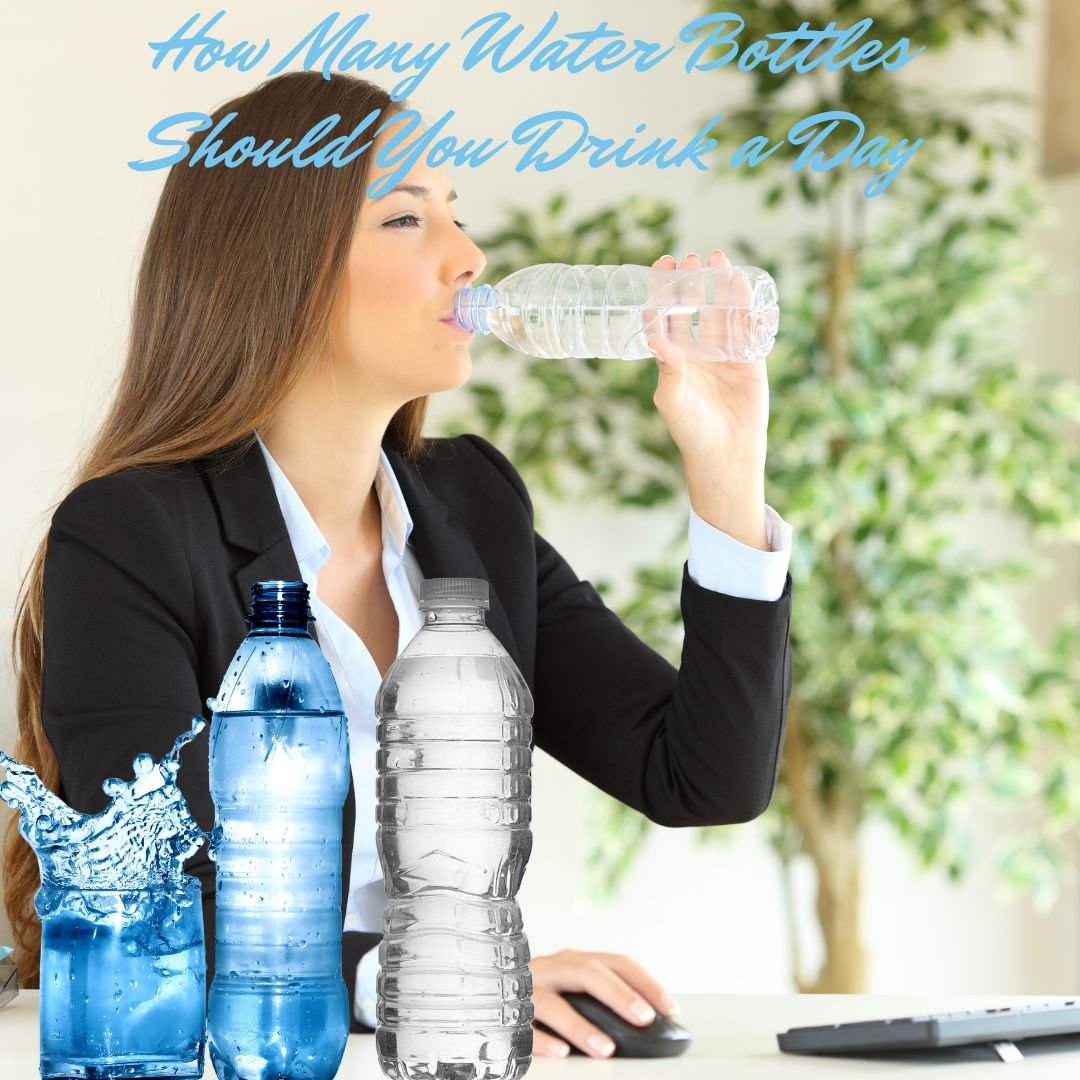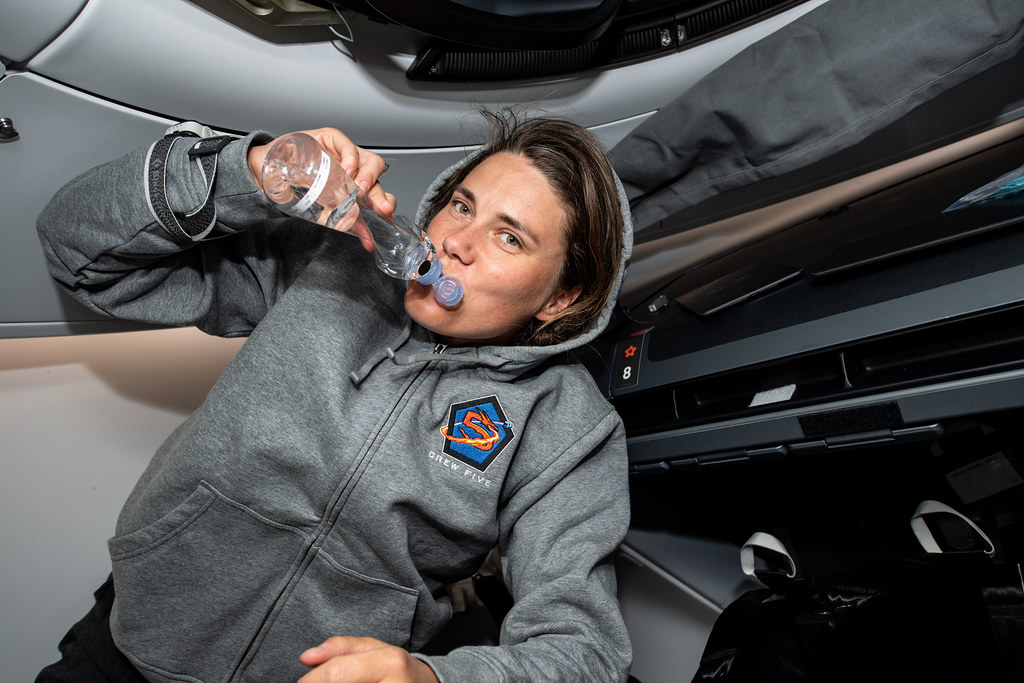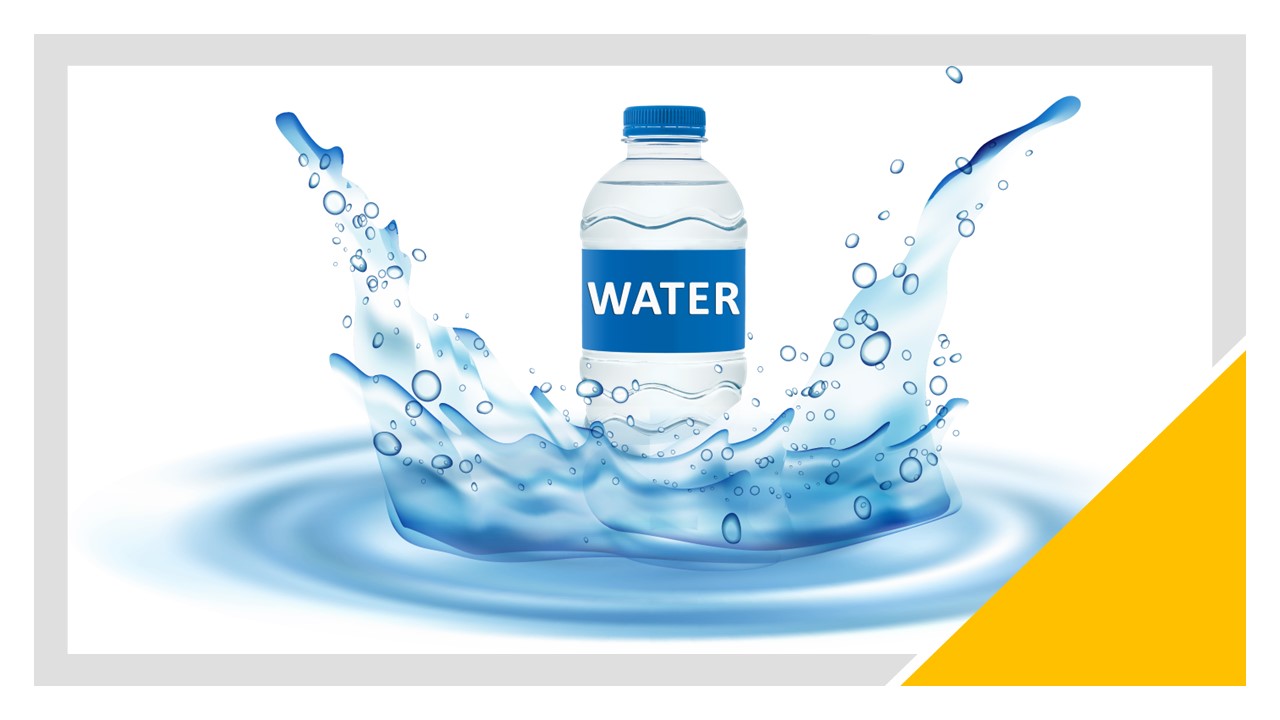How Many Ounces Is A Water Bottle – Discover The Perfect Hydration Companion
How many ounces is a water bottle? If you’ve ever wondered while reaching for your go-to drink, you’re not alone. The most common water bottle size, 16.9 ounces (500 milliliters), is a staple in our daily lives, found everywhere from store shelves to gym bags. But there’s more to water bottles than just their size.
As the summer sun bears down, hydration becomes crucial. With rising temperatures, our bodies lose fluids faster, making it essential to have the right water bottle by your side. But is 16.9 ounces enough? Or do you need something larger for those long, sweltering days?
In this article, we’ll dive into the importance of hydration during the summer, explore the variety of water bottle sizes available, and help you choose the perfect bottle to keep you refreshed all season long.
How Many Ounces Is A Water Bottle
A standard water bottle typically holds around 16.9 ounces (500 milliliters) of liquid. This widely recognized size is commonly found in stores, gyms, and various settings.
However, the importance of water bottles goes beyond their capacity; they are essential companions, especially during hot summer days when staying hydrated is crucial.
In this article, we will explore the significance of proper hydration, delve into various water bottle sizes, and provide insights into making the most of your water-drinking experience.
From health benefits to eco-friendly options and personalized accessories, we’ll cover it all to ensure you’re well-equipped for every adventure, no matter the season.
Here is the answer to how many ounces is a water bottle:
here’s a table listing common types of water bottle sizes along with their corresponding capacities in ounces:
| Water Bottle Size | Ounces | Milliliters |
| Small | 8 oz | 237 ml |
| Standard | 16.9 oz (500 ml) | 500 ml |
| Medium | 20 oz | 591 ml |
| Large | 24 oz | 710 ml |
| Extra Large | 32 oz | 946 ml |
| 1 Liter | 33.8 oz (1000 ml) | 1000 ml |
| 1.5 Liters | 50.7 oz (1500 ml) | 1500 ml |
| 2 Liters | 67.6 oz (2000 ml) | 2000 ml |
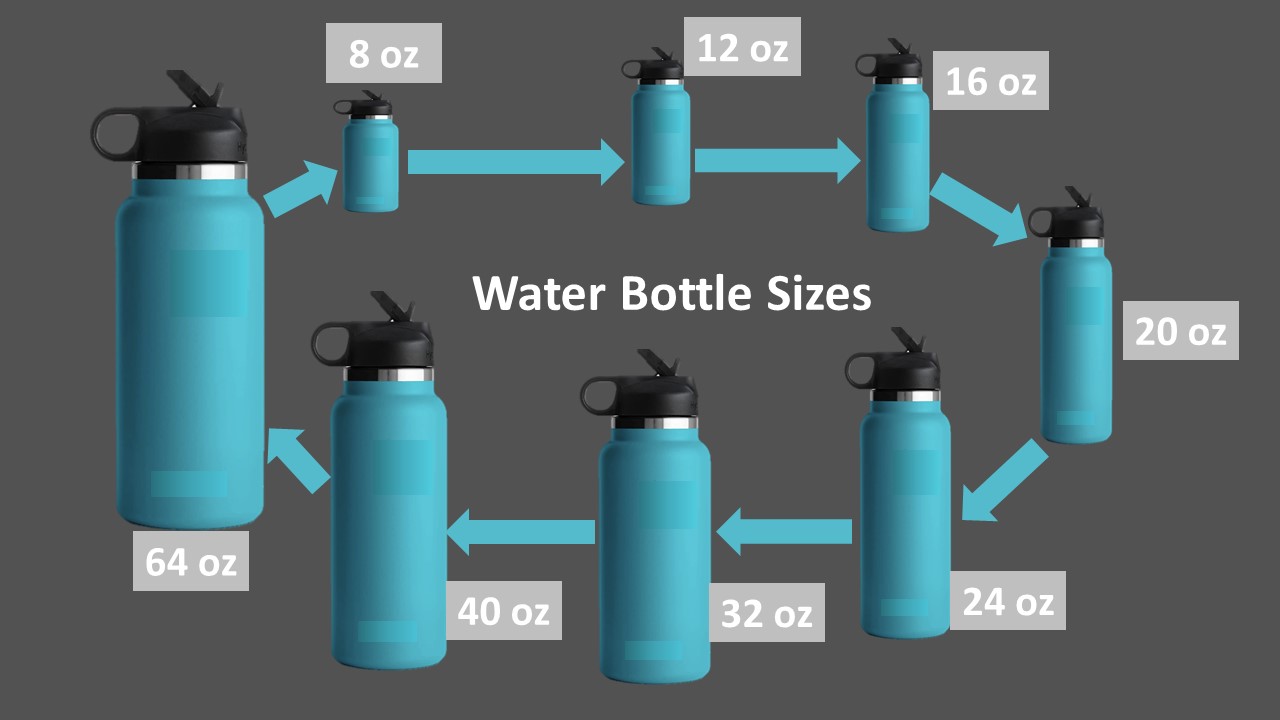
The Standard Size Of A Water Bottle (How Many Ounces Is A Water Bottle)
The standard size of a water bottle often comes in various sizes, but one of the most common standard sizes is 16.9 ounces (500 milliliters). This size is widely recognized and used for single-serving bottled water that you might find in stores, vending machines, and other locations.
However, water bottles can come in a range of sizes, including smaller ones like 8 ounces or larger ones like 20 ounces, 1 liter (33.8 ounces), and beyond, to suit different hydration needs and preferences.
RELATED: What Is Alkaline Water – Unlock the Benefits Today
What Each Water Bottle Size Is Good For
- Small (8 oz): The small 8-ounce water bottles are perfect for quick sips on the go. They’re often chosen for short outings or when you need just a little hydration boost.
- Standard (16.9 oz / 500 ml): The standard 16.9-ounce water bottle, also known as a half-liter bottle, is a popular choice for staying hydrated throughout the day. It fits comfortably in most cup holders and backpack pockets, making it convenient for various activities.
- Medium (20 oz): The 20-ounce water bottle offers a bit more hydration than the standard size, making it a suitable companion for longer workouts or outdoor adventures.
- Large (24 oz): For those who prefer larger sips of water, the 24-ounce bottle provides ample hydration while still being manageable in terms of portability.
- Extra Large (32 oz): When you’re engaging in more intense activities or spending extended periods outdoors, the 32-ounce water bottle ensures you have enough water to keep you refreshed.
- 1 Liter (33.8 oz / 1000 ml): The 1-liter water bottle is a common choice for those who want to meet their daily hydration goals with fewer refills. It’s a great size for office desks, school, or long commutes.
- 1.5 Liters (50.7 oz / 1500 ml): Suitable for longer outings or sharing, the 1.5-liter water bottle offers a generous amount of water without being too bulky.
- 2 Liters (67.6 oz / 2000 ml): The 2-liter water bottle is often chosen for activities that demand sustained hydration, such as hiking, camping, or participating in sports.
It’s important to select a water bottle size that aligns with your hydration needs and the duration of your activities. Keeping a variety of sizes on hand can be beneficial for different situations.
Additionally, remember that the quality of the bottle, material, and features like insulation or filtration can influence your overall drinking experience.
Whether you’re sipping from a compact 8-ounce bottle or staying refreshed with a larger 2-liter container, the key is to prioritize regular hydration for your well-being.
INTERESTING READ: Are Water Bottles Bad for You?
The Best Water Bottles Perfect For Different Occasions (How Many Ounces Is A Water Bottle)
Experience hydration at its finest with the best water bottles on the market. From sleek designs to advanced features, these bottles are more than just containers – they’re companions on your journey to optimal well-being.
Product Image | Product Name | Key Features | Rating | Price |
| ||||
| ||||
| ||||
| ||||
| ||||
| ||||
| ||||
| ||||
| ||||
|
Why Know How Many Ounces Is A Water Bottle?
Knowing how many ounces is a water bottle is more than just a matter of trivia; it’s a practical piece of information that directly impacts your hydration habits and overall well-being. Here’s why understanding the ounces in a water bottle is important:
1. Optimal Hydration
The human body requires a certain amount of water intake to function properly. By knowing the ounces in a water bottle, you can gauge how much you’re drinking throughout the day and ensure you’re meeting your hydration needs.
This knowledge empowers you to set hydration goals and track your progress, helping you stay energized, maintain focus, and support various bodily functions.
2. Portion Control
Different activities call for different levels of hydration. Whether you’re at the gym, on a hike, or at your desk, having a grasp of water bottle sizes allows you to tailor your water intake to the situation.
Smaller bottles might be suitable for shorter tasks, while larger bottles can help you stay hydrated during more extended activities.
3. Preparation for Outings
When you’re heading out for the day, knowing how many ounces are in your chosen water bottle ensures you’re adequately prepared. This is particularly crucial during hot weather or when engaging in physical activities, as dehydration can set in quickly without proper hydration.
4. Smart Shopping
When shopping for water bottles, being aware of the ounces they hold helps you select the right size for your needs. It prevents surprises and ensures you get a bottle that suits your lifestyle and preferences.
5. Setting Health Goals
Hydration is linked to overall health and well-being. By understanding water bottle sizes, you can better implement strategies to stay hydrated, such as carrying an appropriate-sized bottle with you, setting reminders to drink, and monitoring your intake.
6. Environmental Considerations
With knowledge of water bottle sizes, you can make environmentally conscious choices. Opting for larger bottles or reusable options can reduce the use of single-use plastics, contributing to a more sustainable lifestyle.
7. Sharing and Planning
Whether you’re sharing water with friends, family, or colleagues, knowing the ounces in a water bottle helps ensure everyone gets an adequate amount. It also aids in planning for events, trips, and gatherings where staying hydrated is essential.
In essence, understanding the ounces in a water bottle empowers you to take control of your hydration and make informed decisions about your health.
From setting hydration goals to selecting the right bottle for various activities, this knowledge enhances your overall quality of life and supports your journey towards a healthier, more hydrated you.
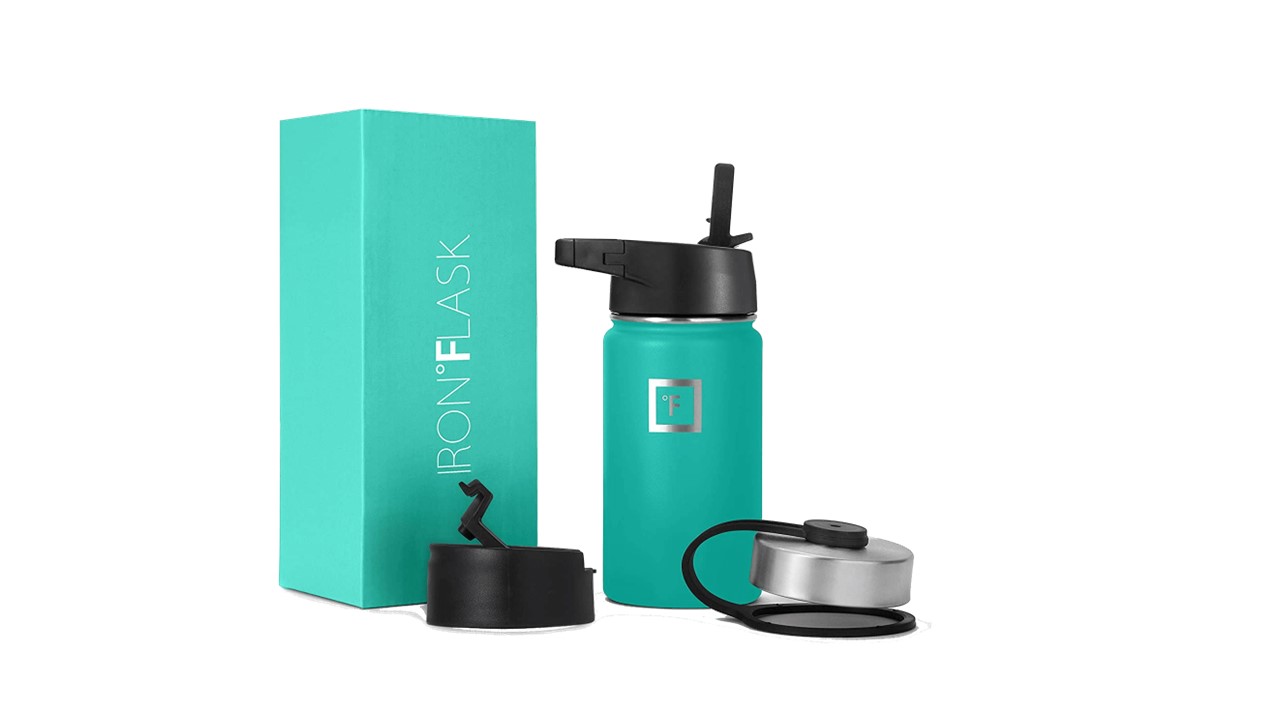
Staying Hydrated With Water Bottle: The Essence of Vitality (How Many Ounces Is A Water Bottle)
Staying hydrated isn’t just a matter of quenching your thirst; it’s a cornerstone of maintaining overall health and well-being. Water is crucial for several bodily functions, including temperature regulation, digestion, circulation and the removal of waste products.
Proper hydration is vital for maintaining cognitive function, promoting healthy skin, supporting physical performance, and preventing dehydration-related complications. To understand how much water you need daily, it’s crucial to consider several factors that influence your individual hydration requirements.
Factors Influencing Hydration Needs – How Much Water A Person Should Drink Per Day
- Age: Younger individuals generally have a higher proportion of body water and might need to replenish fluids more frequently. Older adults may experience reduced sensitivity to thirst and should consciously focus on drinking water regularly.
- Activity Level: Physical activity increases water loss through sweating. It’s crucial to hydrate before, during, and after exercise to maintain optimal performance and prevent fatigue or heat-related illnesses.
- Climate: Hot and humid climates lead to increased sweat production, causing higher fluid losses. In such conditions, it’s essential to drink more water to counteract dehydration.
- Health Conditions: Certain medical conditions like fever, vomiting, or diarrhea can lead to rapid fluid loss. Adequate hydration becomes even more critical during illness to support recovery and prevent complications.
- Body Size: Larger individuals typically have a higher metabolic rate and may require more water to maintain hydration balance.
Guidelines for Daily Hydration
While the “8×8” rule (eight 8-ounce glasses of water a day) is a common guideline, individual hydration needs vary. A more personalized approach considers the following factors:
- General Guideline: On average, aim for about 8 cups (64 ounces) of fluids a day, including all beverages and water-rich foods.
- Activity: Increase fluid intake when engaging in physical activities. Consume water before, during, and after exercise, adjusting based on duration and intensity.
- Thirst: Pay attention to your body’s thirst cues. Thirst is a reliable indicator of hydration needs.
- Urine Color: Pale yellow urine indicates proper hydration, while darker urine suggests dehydration.
- Health Conditions: Medical conditions like kidney stones or urinary tract infections might require increased water intake. Consult your healthcare provider for personalized recommendations.
Remember, there’s no one-size-fits-all approach to hydration. Listen to your body and adapt your fluid intake based on the factors mentioned above.
By making hydration a conscious part of your daily routine, you’re taking a proactive step toward supporting your body’s functions, maintaining energy levels, and fostering your overall health.
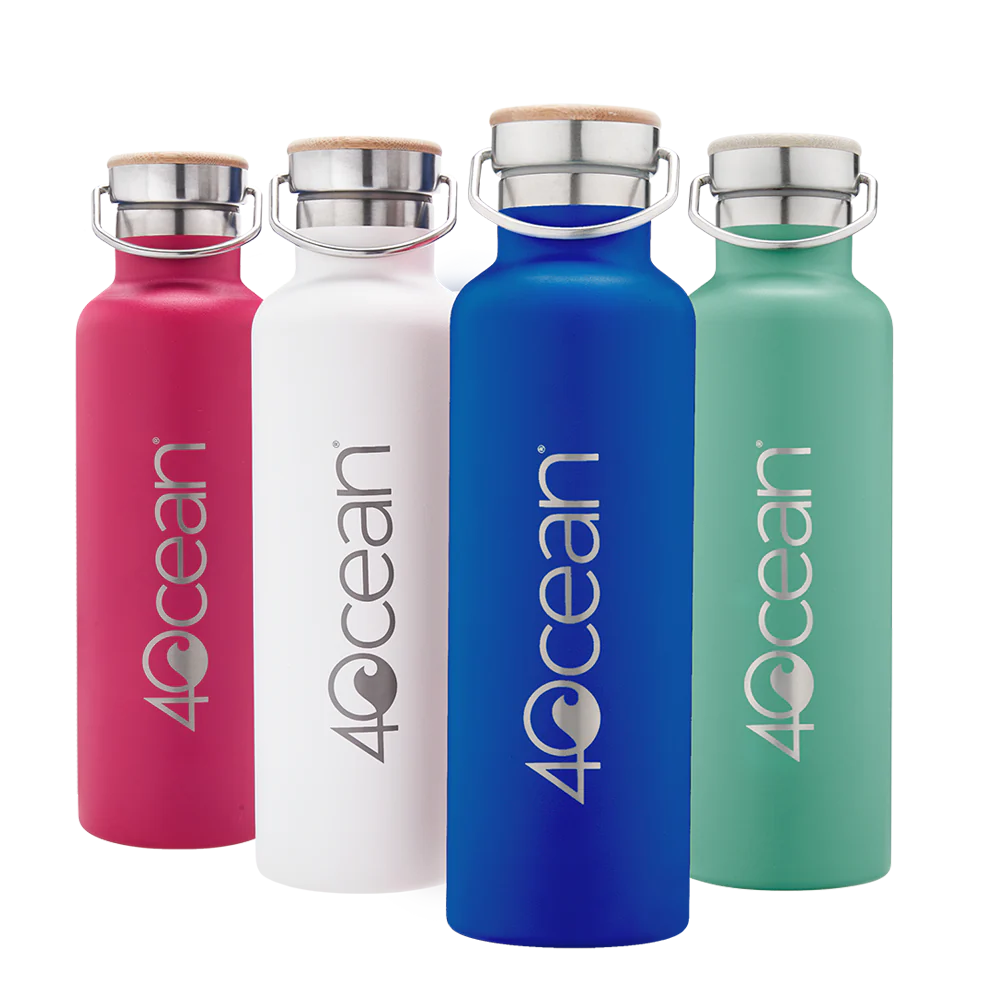
Reusable vs. Disposable Bottles (How Many Ounces Is A Water Bottle)
| Aspect | Reusable Water Bottles | Disposable Water Bottles |
| Environmental Impact | Pros: | Pros: |
| – Reduces plastic waste | – Convenient for single use | |
| – Lowers carbon footprint | – Easily available | |
| – Decreases energy consumption | – No need to carry around | |
| Health and Safety | – Often made from safer materials | – Sealed and hygienic |
| – Minimal risk of chemical leaching | – No need for cleaning | |
| – Easy to clean and disinfect | – No risk of cross-contamination | |
| Durability and Longevity | – Can last for years with proper care | – Designed for short-term use |
| – Resistant to impact and wear | – No worries about damage or loss | |
| Convenience and Cost | – Initial cost may be higher, but cost-effective in the long run | – Low initial cost, but adds up over time |
| – Refillable from tap or filtered sources | – Requires continuous repurchasing | |
| – Available in various sizes and designs | – Limited variety in sizes and designs | |
| Aesthetic and Personalization | – Offers personalization and style options | – Uniform appearance |
| – Encourages attachment due to ownership | – Lacks individuality | |
| Environmental Impact | Cons: | Cons: |
| – Requires proper care and cleaning | – Contributes to plastic pollution | |
| – Can be bulky to carry | – Creates excessive waste | |
| – Risk of loss or damage | – Higher carbon footprint and energy usage |
It’s clear that reusable water bottles offer substantial benefits, especially in terms of environmental impact and long-term cost-effectiveness. They contribute to reducing plastic waste and conserving resources, making them a more sustainable choice.
While disposable bottles may offer convenience, they come with significant drawbacks, including their negative impact on the environment and the potential health risks associated with certain types of plastic.
Choosing The Right Water Bottle (How Many Ounces Is A Water Bottle)
Choosing the right water bottle size depends on various factors, such as the duration of your activity, your hydration needs, and the convenience of carrying the bottle. Here are some tips to help you select the ideal water bottle size based on different scenarios:
1. Short Outings and Everyday Use
For quick errands, a small 8-ounce or 16.9-ounce bottle might be sufficient. These sizes are easy to carry and fit into small bags or pockets, making them convenient for short trips to the store, office, or running errands.
2. Work or School
If you’re spending a considerable part of your day at work or school, a 20-ounce or 24-ounce bottle can provide adequate hydration without the need for frequent refills. It’s a balanced choice for staying hydrated during your daily routine.
3. Fitness and Sports
When engaging in physical activities like workouts, sports, or hikes, opt for a larger bottle. A 32-ounce or 1-liter bottle ensures you have enough water to stay hydrated throughout your exercise routine or outdoor adventure.
4. Longer Outings or Travel
If you’re planning to be out for an extended period or traveling, consider a 1-liter or 1.5-liter bottle. These sizes provide ample hydration and reduce the need for frequent stops to refill.
5. Hot Weather or Intense Activities
In hot weather or when participating in strenuous activities, opt for a larger bottle to ensure you’re replenishing fluids lost through sweating. A 20-ounce to 32-ounce bottle is a good choice for such scenarios.
6. Kids and Family Outings
If you’re packing for the whole family, consider carrying a combination of sizes. Smaller bottles for kids and larger bottles for adults can help everyone stay hydrated without carrying an excessive number of bottles.
7. Hydration Goals
Tailor your bottle size to your personal hydration goals. If you aim to drink a certain amount of water daily, choose a size that aligns with that goal. A 1-liter bottle, for instance, could be a great way to meet a 2-liter daily intake goal.
Remember that it’s okay to have multiple water bottles of different sizes for different occasions. Having a variety of bottles allows you to be flexible and ensure you’re always prepared to meet your hydration needs, regardless of the situation.
The right water bottle size makes a significant difference in your comfort, convenience, and overall hydration routine.
Specialty Water Bottles (How Many Ounces Is A Water Bottle)
Specialty water bottles offer innovative features that cater to specific needs and preferences. These specialized options go beyond basic hydration and provide added convenience, making them a popular choice for various lifestyles. Here are some specialty water bottle options and their benefits:
1. Insulated Water Bottles
Insulated water bottles are designed to maintain the temperature of your beverages, whether it’s keeping liquids cold on a scorching day or hot on a chilly morning. These bottles are typically double-walled with a vacuum-sealed layer, creating an effective barrier against temperature transfer.
They’re great for outdoor activities, travel, or even everyday use when you want your drinks to stay at their desired temperature for extended periods.
2. Collapsible Water Bottles
Collapsible water bottles are a space-saving solution for those who value portability. These bottles can be compressed or folded when empty, taking up minimal space in your bag. They’re ideal for travelers, hikers, and anyone looking to save room when the bottle isn’t in use.
3. Filtered Water Bottles
Filtered water bottles come equipped with built-in filters that purify water as you drink. They’re perfect for individuals who want to ensure clean and safe drinking water wherever they go, whether it’s from a tap, river, or questionable water source.
These bottles are excellent for outdoor adventurers, travelers, and those who are environmentally conscious and want to avoid single-use plastic bottles.
4. Infuser Water Bottles
Infuser water bottles have a separate compartment for adding fruits, herbs, or other flavor-enhancing ingredients to your water. They allow you to create your own flavored water combinations, making hydration more enjoyable for those who find plain water less appealing.
5. UV-C Sterilizing Water Bottles
Some specialty bottles incorporate UV-C technology to sterilize the water and inner surfaces of the bottle, helping to eliminate bacteria and viruses. These bottles are gaining popularity for their ability to provide clean and safe drinking water without the use of chemicals.
6. Smart Water Bottles
Smart water bottles often come with built-in sensors that track your hydration habits and remind you to drink water at regular intervals. They can sync with smartphone apps to provide hydration insights and reminders, helping you meet your daily water intake goals.
7. Shaker Water Bottles
Shaker bottles are designed for mixing powdered supplements, protein shakes, or smoothies. They usually come with a built-in mixing ball or mesh screen to ensure your drinks are thoroughly blended.
Specialty water bottles cater to specific needs, enhancing your hydration experience with added features. When choosing a specialty bottle, consider your lifestyle, preferences, and the activities you’ll be engaging in.
Whether you’re looking for temperature control, space efficiency, filtration, or added flavor, there’s likely a specialty water bottle that suits your requirements.
Health Benefits of Hydration (How Many Ounces Is A Water Bottle)
Staying properly hydrated isn’t just about quenching your thirst; it’s a fundamental aspect of maintaining optimal health and well-being. The benefits of hydration extend far beyond simple hydration, impacting various bodily functions and contributing to your overall vitality.
Here are some compelling health benefits of staying adequately hydrated:
1. Improved Digestion
Adequate hydration supports the digestive process by ensuring that your body can efficiently break down and absorb nutrients from food. It helps prevent constipation and supports regular bowel movements, promoting a healthy gut and digestive system.
2. Clearer Skin
Proper hydration plays a role in maintaining healthy skin. Well-hydrated skin is more elastic, less prone to dryness, and has a natural glow. Hydration can also help reduce the appearance of fine lines and wrinkles, giving your skin a youthful complexion.
3. Enhanced Cognitive Function
Dehydration can negatively impact cognitive function, leading to difficulty concentrating, decreased alertness, and impaired memory. Staying hydrated supports brain health, ensuring that you can stay focused, make clear decisions, and perform cognitive tasks effectively.
4. Increased Energy Levels
Dehydration can lead to feelings of fatigue and decreased energy levels. Proper hydration helps maintain the balance of electrolytes, which are essential for optimal energy production and efficient muscle function.
5. Regulation of Body Temperature
Water plays a crucial part in regulating your body temperature. Adequate hydration helps you manage temperature fluctuations, preventing overheating and ensuring that your body functions optimally in different environments.
6. Physical Performance
When you’re properly hydrated, your muscles and joints function more efficiently. Hydration is vital for maintaining physical endurance, strength, and coordination. Athletes and active individuals benefit greatly from staying hydrated to enhance their performance.
7. Detoxification and Kidney Function
Hydration supports the work of your kidneys in filtering waste products and toxins from your blood. Drinking enough water helps flush out waste and maintain kidney health, reducing the risk of kidney stones and urinary tract infections.
8. Joint Health
Water acts as a lubricant for joints, facilitating smooth movement and reducing the risk of joint pain or stiffness. Staying hydrated is especially important for individuals with conditions like arthritis.
9. Weight Management
Drinking water before meals can contribute to weight management by promoting a feeling of fullness, potentially leading to consuming fewer calories during meals.
10. Mood and Emotional Well-being
Even mild dehydration can affect your mood and cognitive state. Proper hydration supports emotional well-being and helps maintain a positive outlook.
Incorporating hydration as a fundamental part of your daily routine can yield remarkable benefits for your physical, mental, and emotional health.
It’s a simple yet powerful practice that has a profound impact on your overall quality of life. By prioritizing hydration, you’re taking an essential step toward nurturing your body and unlocking its potential for vitality and well-being.
Personalizing Your Bottle (How Many Ounces Is A Water Bottle)
In recent years, the trend of customizing water bottles has gained immense popularity, and for good reason.
Beyond being a fashion statement, personalized water bottles offer a unique blend of style and functionality that resonates with individual preferences and encourages a commitment to staying hydrated.
Here’s how personalizing your water bottle can make a positive impact on your hydration journey:
1. Expression of Identity: A customized water bottle allows you to express your personality, interests, and style. Whether you opt for a sleek minimalist design, a vibrant pattern, or a bottle adorned with your favorite quotes or images, your water bottle becomes an extension of who you are.
2. Enhanced Attachment: When you invest time and effort into personalizing your water bottle, you develop a sense of attachment to it. This attachment can serve as a motivational factor, making you more likely to carry your bottle everywhere you go and drink from it regularly.
3. Visual Reminder: A visually appealing water bottle with customized elements can act as a constant reminder to stay hydrated. Seeing your favorite colors, designs, or motivational messages can prompt you to take sips throughout the day, helping you meet your hydration goals.
4. Encouragement for Consistency: A personalized water bottle can contribute to building a consistent hydration routine. Having a bottle that you genuinely enjoy using makes the act of drinking water more enjoyable, motivating you to stick to the habit over time.
5. Conversation Starter: A unique water bottle can spark conversations and connections. Sharing the story behind your personalized design might inspire others to prioritize hydration and explore their own creative ways to stay motivated.
6. Emotional Connection: Personalized water bottles can hold sentimental value, reminding you of special occasions, achievements, or milestones. This emotional connection can strengthen your commitment to keeping yourself hydrated.
7. Complementing Lifestyles: Customizable water bottles come in various sizes, designs, and features, allowing you to choose one that aligns with your lifestyle. Whether you’re a gym enthusiast, an outdoor adventurer, or a professional working long hours, a personalized bottle can cater to your specific needs.
Incorporating a personalized water bottle into your routine isn’t just about having a stylish accessory—it’s a strategy for fostering a healthier lifestyle. The emotional connection and sense of ownership associated with a customized bottle can make hydration more engaging and enjoyable.
It transforms the act of drinking water from a mundane task into a mindful practice that aligns with your unique tastes and aspirations. So, why not sip from a bottle that resonates with you, as you embark on your journey towards better hydration and well-being?
Hydration Tracking Apps and Gadgets: Your Hydration Coach in Your Pocket and on Your Wrist (How Many Ounces Is A Water Bottle)
In the digital age, staying hydrated has taken a tech-savvy turn with the introduction of hydration tracking apps and wearable gadgets.
These innovative tools are designed to help individuals monitor their water intake, set hydration goals, and receive reminders to drink water regularly. Here’s how these apps and gadgets can be your trusted companions in achieving optimal hydration:
1. Hydration Tracking Apps
Hydration tracking apps are smartphone applications that allow you to log your water consumption and keep tabs on your daily hydration progress. They often come with features such as customizable daily water goals, water intake history, and even visual graphs to visualize your progress over time.
Some apps also consider factors like age, weight, activity level, and climate to provide personalized hydration recommendations. Water tracker Waterllama (iOS) and Water Time Tracker & Reminder (Android) are good apps to track your hydration.
2. Wearable Gadgets
Wearable gadgets, such as fitness trackers and smartwatches, have evolved beyond counting steps and tracking heart rate. Many of these devices now include hydration tracking features.
Some can automatically measure sweat loss to estimate fluid needs, while others send reminders to drink water at regular intervals throughout the day.
3. Features and Benefits
- Hydration Reminders: Both apps and wearables can send notifications to remind you to drink water, helping you stay on track even during busy hours.
- Goal Setting: Set daily water intake goals based on your needs and receive visual cues on how close you are to achieving them.
- Progress Monitoring: Track your hydration history and progress, allowing you to identify patterns and adjust your habits accordingly.
- Personalized Recommendations: Many apps and gadgets consider individual factors to provide personalized hydration recommendations tailored to your body and lifestyle.
- Gamification: Some apps incorporate gamification elements, turning hydration tracking into a fun and engaging experience. Achievements, rewards, and challenges can motivate you to stay hydrated.
4. Integration and Connectivity
Many hydration tracking apps and gadgets can sync with each other and other health-related apps, creating a comprehensive picture of your overall wellness. Some apps even sync with smart water bottles to automatically update your water intake as you drink.
5. Empowering Healthy Habits
Hydration tracking apps and gadgets empower you to take control of your hydration habits in a convenient and modern way. They make staying hydrated a mindful and enjoyable process, providing you with the tools you need to optimize your well-being.
Whether you’re aiming to hit a specific daily water intake target, need reminders to drink water during your busy day, or simply want to build a healthier hydration routine, these tech-driven solutions are designed to help you make hydration a priority in your life.
Essential Water Bottle Accessories: Elevating Your Hydration Experience (How Many Ounces Is A Water Bottle)
Complementing your water bottle with the right accessories can enhance your hydration experience, making it more convenient, versatile, and enjoyable.
From carrying straps to cleaning tools, these accessories are designed to support your hydration goals while adding functionality and style. Here are some essential water bottle accessories:
1. Carrying Straps and Lanyards: Carrying straps and lanyards allow you to hang your water bottle over your shoulder or wear it around your neck.
They are especially useful when you’re on the move and want to keep your hands free. These accessories are great for quick access to your water without the need to dig through your bag.
2. Cleaning Brushes: Cleaning brushes are designed to reach the nooks and crannies of your water bottle, ensuring thorough cleaning and preventing the buildup of bacteria or residue. They’re essential for maintaining hygiene and extending the lifespan of your bottle.
3. Bottle Holders and Clips: Bottle holders and clips are attachments that let you secure your water bottle to your backpack, bike, or even a stroller. They provide a hands-free solution for carrying your bottle, making it easily accessible during outdoor activities or while you’re on the go.
4. Insulated Sleeves and Covers: Insulated sleeves and covers offer extra protection to your water bottle while helping to maintain the temperature of your beverage. They’re particularly useful for keeping drinks cold or hot for longer periods, making your hydration experience more enjoyable.
5. Flip-Top and Straw Lids: Some water bottles come with interchangeable lids that include features like flip-top openings or built-in straws. These lids offer convenient sipping options while minimizing the risk of spills, making them ideal for activities where you need to stay hydrated on the move.
6. Filter Replacements: For water bottles with built-in filters, having extra filter replacements ensures you always have access to clean and safe drinking water. These replacements are especially useful when you’re traveling or in areas with questionable water quality.
7. Silicone Sleeves: Silicone sleeves provide a protective layer around your water bottle, shielding it from impact and reducing the chances of it getting scratched or damaged. They also add a touch of personalization and style to your bottle.
8. Detachable Handles: Detachable handles can be added to water bottles to provide a comfortable grip, making it easier to carry your bottle even when it’s full. They’re particularly useful for larger bottles that may be heavy.
Choosing the right water bottle accessories can enhance the functionality, style, and usability of your hydration gear. These accessories not only make your hydration routine more convenient but also allow you to tailor your water bottle to your specific needs and preferences.
Whether you’re an outdoor enthusiast, a frequent traveler, or simply looking for ways to streamline your daily routine, these accessories are designed to support your hydration journey.
How Many 16 oz In 1 Gallon (How Many Ounces Is A Water Bottle)
There are 128 ounces in 1 gallon. So, to find out how many 16-ounce bottles are in 1 gallon, you would divide 128 by 16:
128 ounces / 16 ounces/bottle = 8 bottles
Therefore, there are 8 sixteen-ounce bottles in 1 gallon.
64 oz Of Water Equals (How Many Ounces Is A Water Bottle)
64 ounces of water is equal to 2 quarts or 1.8927 liters. This is equivalent to half a gallon of water. Staying hydrated and consuming an adequate amount of water throughout the day is important for maintaining good health and well-being.
How Much Is 40 oz Of Water (How Many Ounces Is A Water Bottle)
40 ounces of water is equal to approximately 1.18 liters. It’s also equivalent to 1.25 quarts or about 2.37 standard 16.9-ounce water bottles. Staying aware of your water intake and ensuring you’re hydrated is essential for your overall health and well-being.
Stanley 40 oz Tumbler (How Many Ounces Is A Water Bottle)
The Stanley 40 oz tumbler is a popular insulated container designed to hold 40 fluid ounces of liquid. It’s often used for keeping beverages cold or hot for extended periods.
The tumbler’s durable construction and double-wall insulation make it a versatile option for both indoor and outdoor activities. It’s a popular choice for those who want to enjoy their beverages at the ideal temperature, whether it’s hot coffee on a chilly morning or cold water on a hot day.
How Many Cups Are In 16 oz (How Many Ounces Is A Water Bottle)
There are 2 cups in 16 ounces. So, 16 fluid ounces is equal to 2 cups when measuring volume. This is a common conversion used in recipes and cooking.
How Many Cups Is 40 oz (How Many Ounces Is A Water Bottle)
There are 5 cups in 40 fluid ounces. So, 40 fluid ounces is equal to 5 cups when measuring volume. This conversion is frequently used in various contexts, such as cooking and measuring liquids.
How Much Is 8 oz Of Water (How Many Ounces Is A Water Bottle)
8 ounces of water is equal to 1 cup. In terms of volume, 8 fluid ounces is equivalent to 1 cup. This is a common measurement used in recipes, beverages, and various other applications.
Is 16 Ounces A Pound (How Many Ounces Is A Water Bottle)
Yes, 16 ounces is equal to 1 pound. In both the imperial and U.S. customary systems of measurement, there are 16 ounces in 1 pound. This equivalence is often used when converting between weights in these systems.
The Bottom Line On How Many Ounces Is A Water Bottle
The question “How many ounces is a water bottle” unveils a spectrum of options tailored to your hydration needs. From compact 8-ounce bottles for quick sips to larger 32-ounce and 1-liter bottles for extended outings, there’s a perfect fit for every occasion.
Remember, understanding the variety of water bottle sizes empowers you to make informed choices and prioritize your health through proper hydration.
So, whether it’s a 16.9-ounce standard or a personalized favorite, the right water bottle size ensures you’re always well-equipped to quench your thirst and stay refreshed throughout the day.










